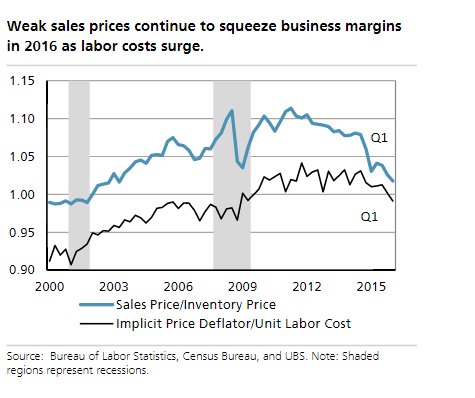One month ago, we were
stunned to report that
none other than billionaire Carl Icahn had taken the net exposure of
his hedge fund, Icahn Enterprises, from a modest net 25% short - his
recent negative bias on the market was hardly a secret - to a
practically apocalyptic,
149% net short which is about as close to betting on a market crash as one could get.

Then last month, billionaire trader Stanley Druckenmiller warned that “the bull market is exhausting itself” and in a
presentation titled "The Endgame", he explained why he too is dumping equities and buying gold.
It turns out Icahn and Druck weren't the only iconic traders betting on a market crash.
In a stunning one-two revelation, the
WSJ reports that
after a nearly decade-long hiatus, not only has George Soros returned
to trading, "lured by opportunities to profit from what he sees as
coming economic troubles", but that he has personally directed "
a series of big, bearish investments", meant to profit from the coming economic turmoil .

The last time Soros became closely involved in his firm’s trading:
2007, "when he became worried about housing and placed bearish wagers."
Over the next two years the bets netted more than $1 billion of gains.
According to the WSJ's Greg Zuckerman, Soros Fund Management, which manages $30 billion for Mr. Soros and his family,
sold stocks and bought gold and shares of gold miners, anticipating weakness in various markets. Investors view gold as a haven during times of turmoil.
The move is rather shocking for the 85 year old, who earned fame with
a bet against the British pound in 1992, a trade that led to $1 billon
of profits. In recent years the billionaire has focused on public policy
and philanthropy. He is also a large contributor to the super PAC
backing presumptive Democratic nominee Hillary Clinton and has donated
to other groups supporting Democrats.
It appears he was also bored.
While Soros has always closely monitored his firm’s investments, as
he got older he would delegate more and more, with many of his proteges
moving on to start their own hedge funds, Trump's fundraiser Steven
Mnuchin being just one example. As a result, in recent years, he hasn’t
done as much investing of his own. That however has now changed and as
the WSJ notes, recently Soros has been spending more time in the office
directing trades. He has also been in more frequent contact with the
executives, the people said.
According to the WSJ, Soros is stepping into a void at his firm. Last
year, Scott Bessent, who served as Soros’s top investor and has a
background in macro investing, or anticipating macroeconomic moves
around the globe, left the firm to start his own hedge fund. Soros has
invested $2 billion with Mr. Bessent’s firm, Key Square Group. Later in
2015, Mr. Soros tapped Ted Burdick as his chief investment officer. Mr.
Burdick has a background in distressed debt, arbitrage and other types
of trading, rather than macro investing, Mr. Soros’s lifelong specialty.
Which is why Soros felt comfortable stepping back in, and - as it
turns out - it was to begin building a major bearish position. "Soros’s
recent hands-on approach reflects a gloomier outlook than many. His
worldview darkened over the past six months as economic and political
issues in China, Europe and elsewhere have become more intractable.
While the U.S. stock market has inched back toward records after
troubles early this year and Chinese markets have stabilized, Mr. Soros
said he remains skeptical of the Chinese economy, which is slowing."
While we documented Soro's pessimism about China earlier in the year,
it appears to have only gotten worse, and as Soros said, "the fallout
from any unwinding of Chinese investments likely will have global
implications."
“China continues to suffer from capital flight and has been depleting
its foreign currency reserves while other Asian countries have been
accumulating foreign currency,” Soros said in an email. “China is facing
internal conflict within its political leadership, and over the coming
year this will complicate its ability to deal with financial issues.”
China will hardly be amused, and will promptly seek to muzzle any
media outlets reporting Soros' renewed pessimism toward China's
"recovery." It will hardly help its situation.
It's not just China. Soros also argues that there remains a good
chance the European Union will collapse under the weight of the
migration crisis, continuing challenges in Greece and a potential exit
by the United Kingdom from the EU. “If Britain leaves, it could unleash a
general exodus, and the disintegration of the European Union will
become practically unavoidable,” he said. Still, Mr. Soros said recent
strength in the British pound is a sign that a vote to exit the EU is
less likely. “I’m confident that as we get closer to the Brexit vote,
the ‘remain’ camp is getting stronger,” Mr. Soros said. “Markets are not
always right, but in this case I agree with them.”
Finally, there is the US. Soros also adopted bearish derivative positions that serve as wagers against U.S. stocks.
It isn’t clear when those positions were placed and at what levels during the first quarter, but
the S&P 500 index has climbed 3% since the beginning of the second
period, suggesting Mr. Soros could be facing losses on some of those
moves. Unless, of course, the puts are longer-dated and the market does
in fact proceed to crash.
Overall, the Soros fund is up a bit this year, in line with most
macro hedge funds, according to people close to the matter. The
investments by the firm were previously disclosed in filings, but it
wasn’t clear how involved Mr. Soros was in the decisions spurring the
moves.
* * *
The WSJ concludes by pointing out that the last time Soros became
closely involved in his firm’s trading: 2007, when he became worried
about housing and placed bearish wagers over two years that netted more
than $1 billion of gains. And now, a very bearish Soros is back again.


